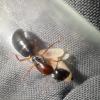[Jul/20/2020]
I caught 9 of these queens on July 6th of this year. Out of all the species I have caught inland these queens seem to be the most tolerant of heat/desiccation, as they were running around on the ground from noon until the start of the evening when the other queens started emerging. They are also quite hard to catch and very perceptive; just your very presence will send them bolting faster than some Formica workers in haphazard zigzags, not to mention only about 7mm in length. I suspect I could have gotten more if my attempt to catch one queen didn't scare away the handful of others nearby, as this species likes to nest in grass and hence the visibility for catching queens is already quite poor. This may also explain why I don't see these queens caught more often despite the ubiquity of F. lasioides as a species, either that or they're just that boring. Once caught however these queens are some of the more calmer and easy going Formica I have kept, as almost all of them laid eggs the next day, aren't very skittish, unfazed by light and not as responsive to vibrations (at least compared to other Formica). They are also quite fast growing as by now (exactly 2 weeks after being caught) all the queens have larvae although the number and development of larvae vary considerably. This is possibly due to the fact I fed all the queens sugar water before founding and some drank more than others (from all of the food to none). While this seems like a very plausible explanation due to me not recording any data it's not certain. It does seem these queens prefer it a bit on the warmer side though (21C to 24C maybe, I'll have to measure for certain), no idea regarding preferred humidity however.
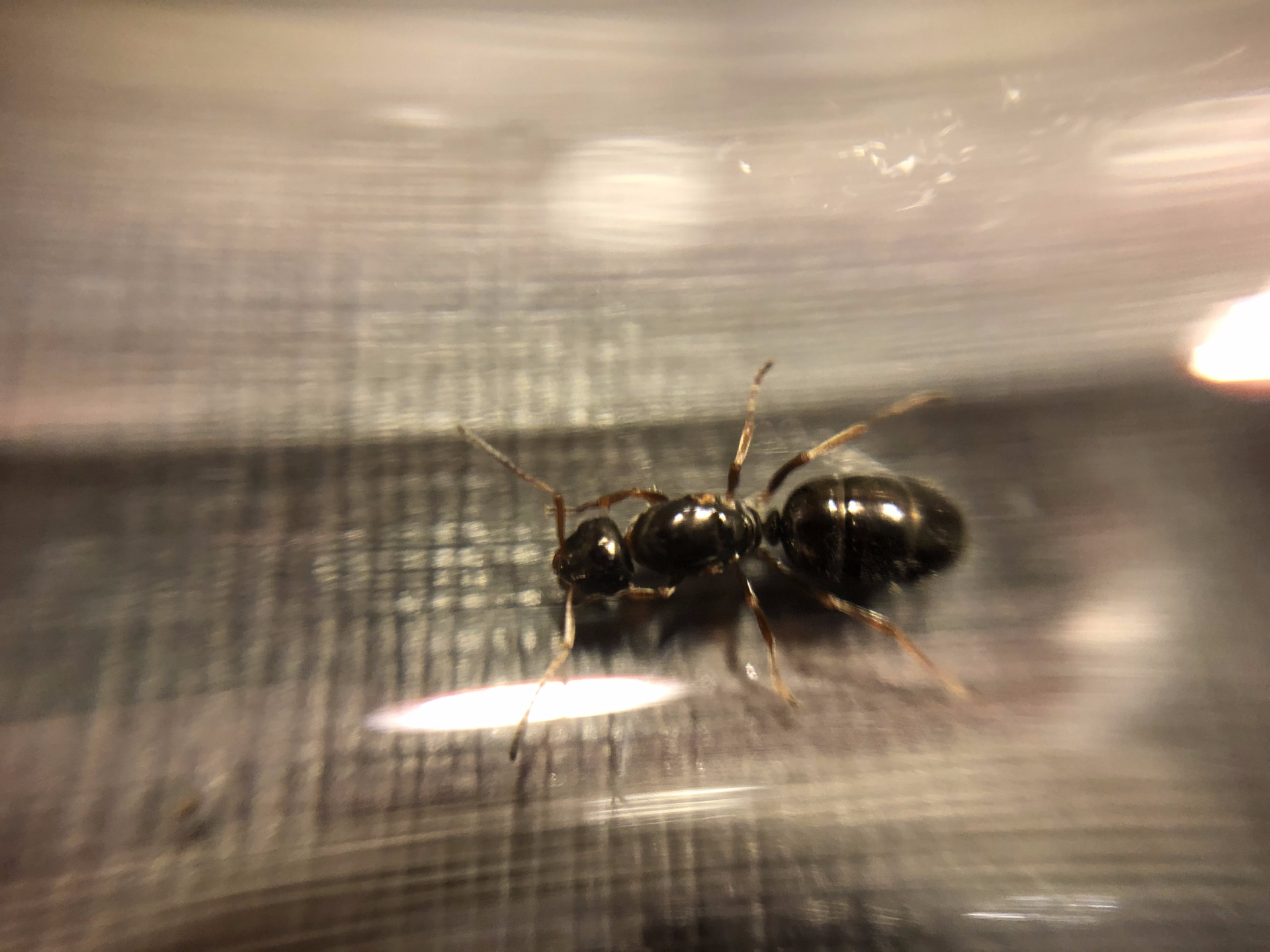
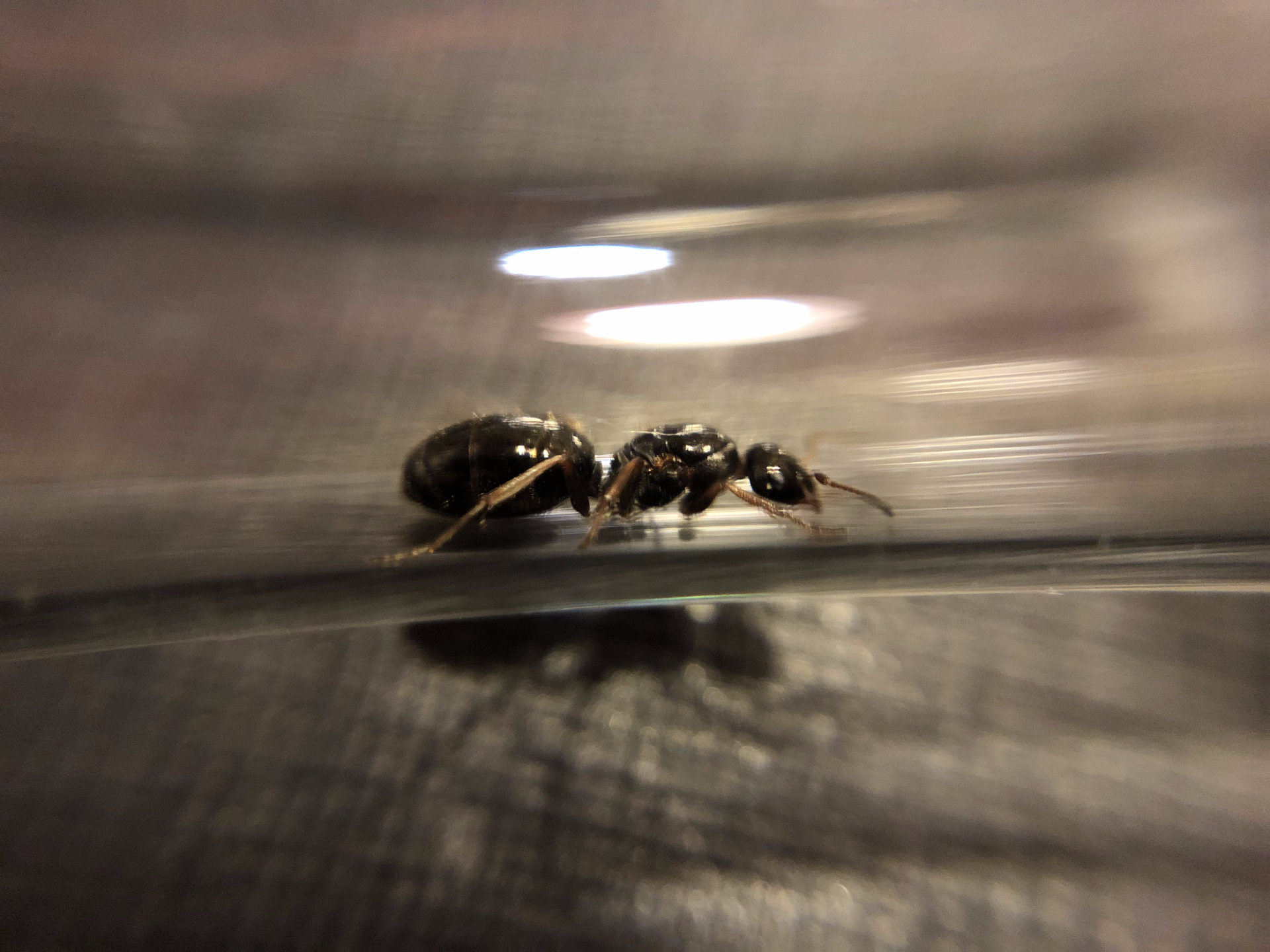
A queen [Jul/07/2020]
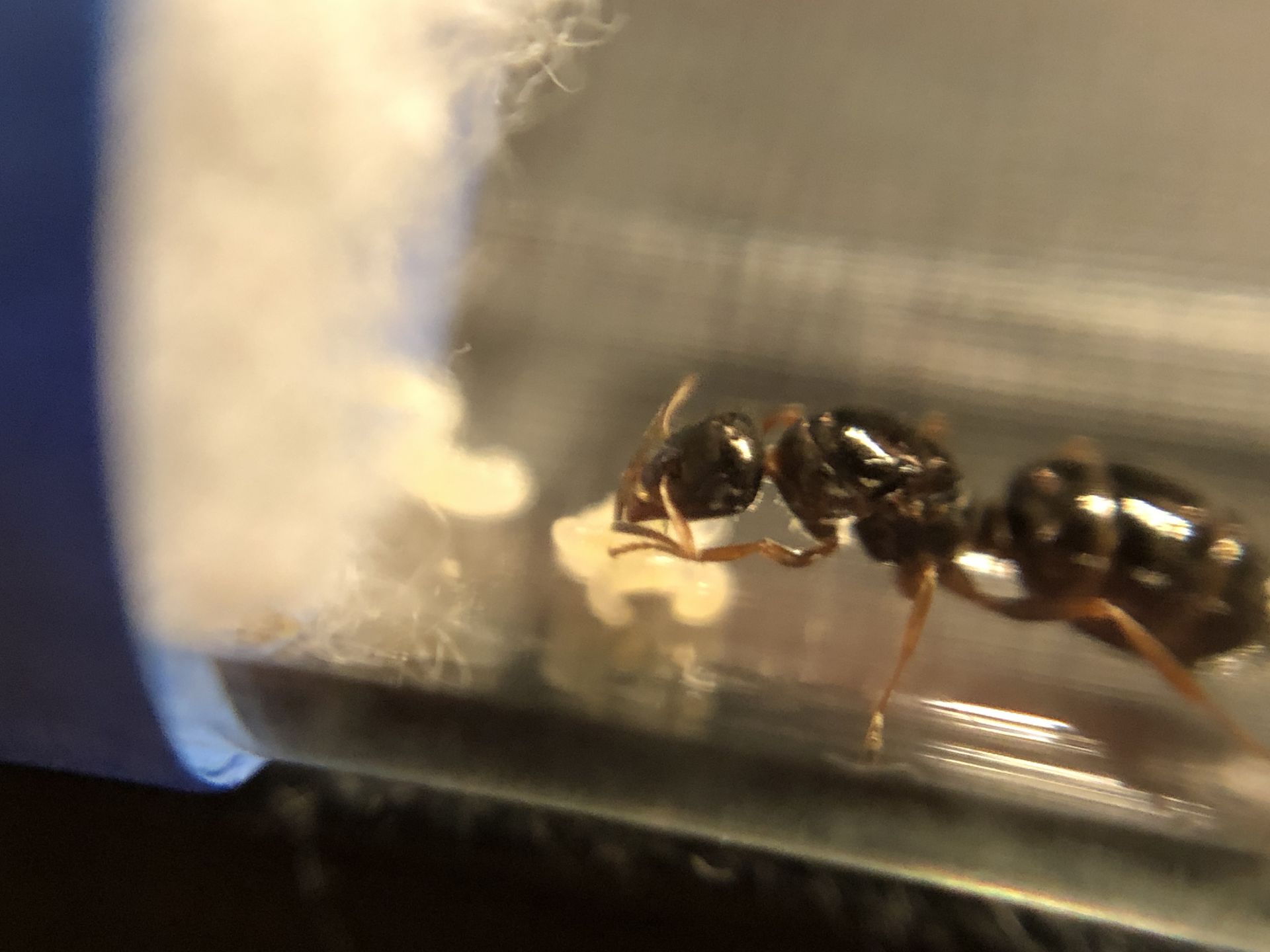
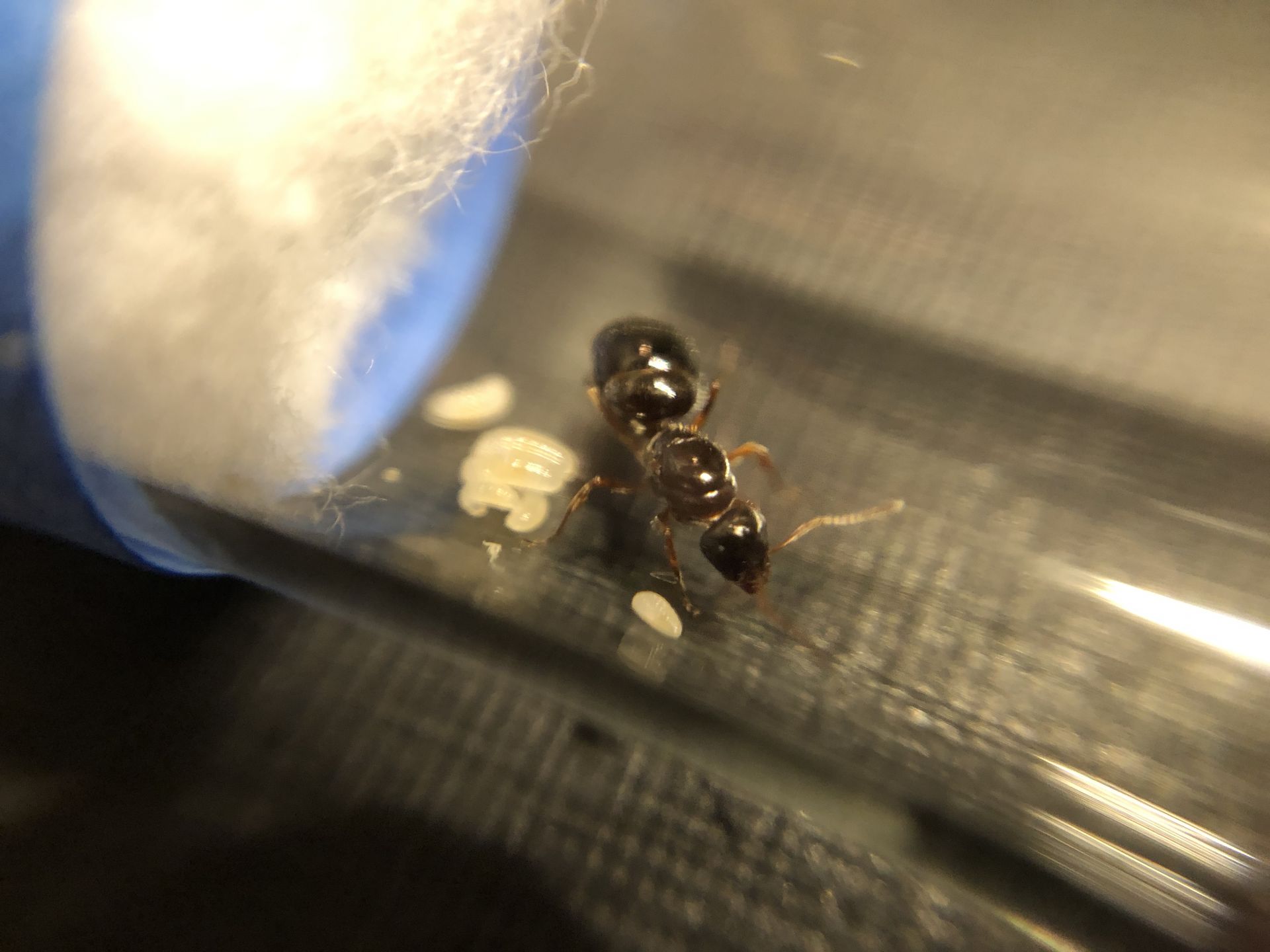
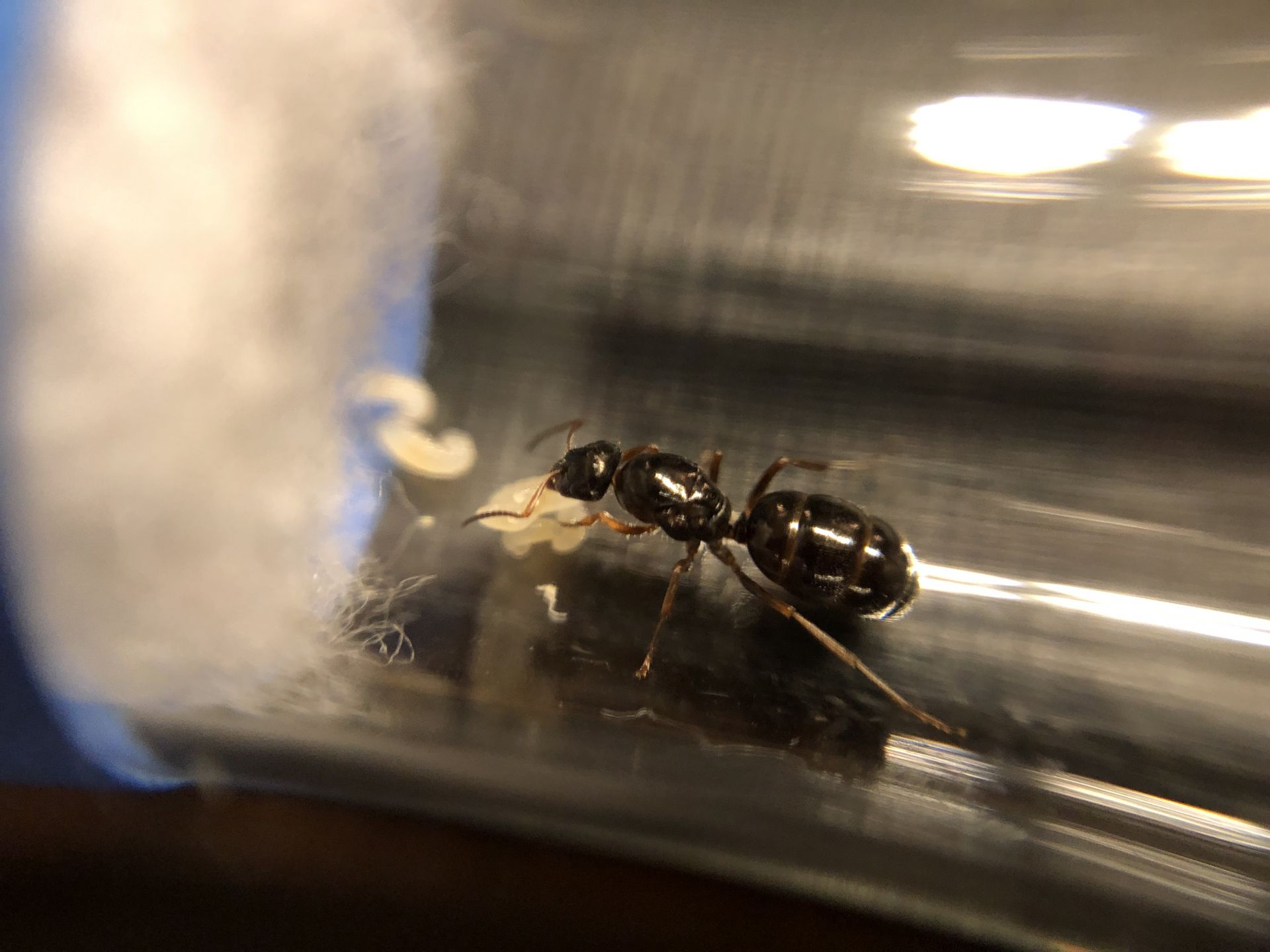
One of the more prolific queens [Jul/20/2020]
From observations in the field, this species likely serves as the primary host for F. subnitens, at least in British Columbia. Although I have yet to confirm this.














